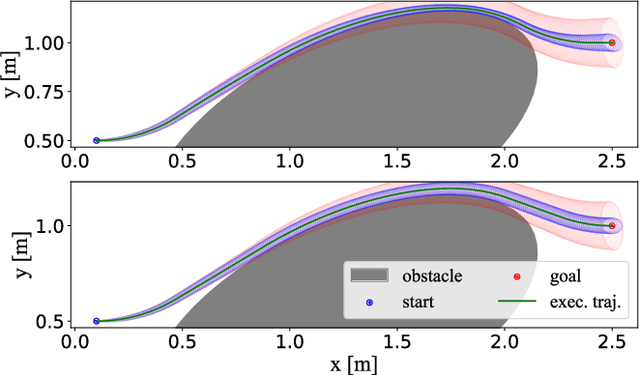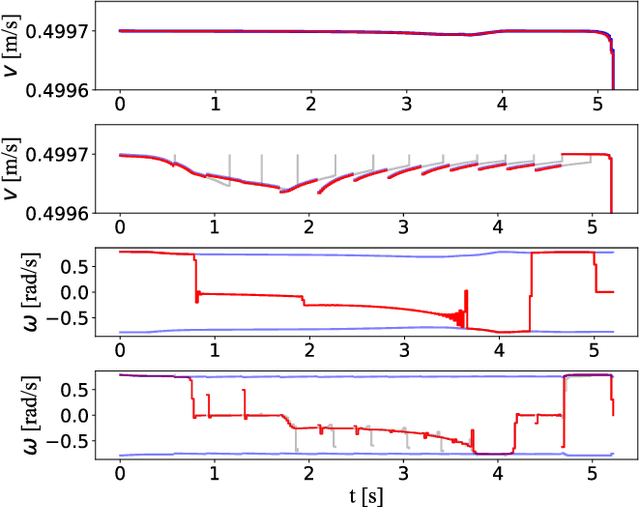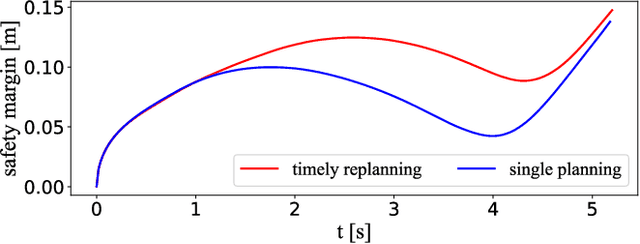Shuhao Zhang
DLP: Dynamic Layerwise Pruning in Large Language Models
May 27, 2025Abstract:Pruning has recently been widely adopted to reduce the parameter scale and improve the inference efficiency of Large Language Models (LLMs). Mainstream pruning techniques often rely on uniform layerwise pruning strategies, which can lead to severe performance degradation at high sparsity levels. Recognizing the varying contributions of different layers in LLMs, recent studies have shifted their focus toward non-uniform layerwise pruning. However, these approaches often rely on pre-defined values, which can result in suboptimal performance. To overcome these limitations, we propose a novel method called Dynamic Layerwise Pruning (DLP). This approach adaptively determines the relative importance of each layer by integrating model weights with input activation information, assigning pruning rates accordingly. Experimental results show that DLP effectively preserves model performance at high sparsity levels across multiple LLMs. Specifically, at 70% sparsity, DLP reduces the perplexity of LLaMA2-7B by 7.79 and improves the average accuracy by 2.7% compared to state-of-the-art methods. Moreover, DLP is compatible with various existing LLM compression techniques and can be seamlessly integrated into Parameter-Efficient Fine-Tuning (PEFT). We release the code at https://github.com/ironartisan/DLP to facilitate future research.
CEFW: A Comprehensive Evaluation Framework for Watermark in Large Language Models
Mar 24, 2025Abstract:Text watermarking provides an effective solution for identifying synthetic text generated by large language models. However, existing techniques often focus on satisfying specific criteria while ignoring other key aspects, lacking a unified evaluation. To fill this gap, we propose the Comprehensive Evaluation Framework for Watermark (CEFW), a unified framework that comprehensively evaluates watermarking methods across five key dimensions: ease of detection, fidelity of text quality, minimal embedding cost, robustness to adversarial attacks, and imperceptibility to prevent imitation or forgery. By assessing watermarks according to all these key criteria, CEFW offers a thorough evaluation of their practicality and effectiveness. Moreover, we introduce a simple and effective watermarking method called Balanced Watermark (BW), which guarantees robustness and imperceptibility through balancing the way watermark information is added. Extensive experiments show that BW outperforms existing methods in overall performance across all evaluation dimensions. We release our code to the community for future research. https://github.com/DrankXs/BalancedWatermark.
Ferret: An Efficient Online Continual Learning Framework under Varying Memory Constraints
Mar 15, 2025Abstract:In the realm of high-frequency data streams, achieving real-time learning within varying memory constraints is paramount. This paper presents Ferret, a comprehensive framework designed to enhance online accuracy of Online Continual Learning (OCL) algorithms while dynamically adapting to varying memory budgets. Ferret employs a fine-grained pipeline parallelism strategy combined with an iterative gradient compensation algorithm, ensuring seamless handling of high-frequency data with minimal latency, and effectively counteracting the challenge of stale gradients in parallel training. To adapt to varying memory budgets, its automated model partitioning and pipeline planning optimizes performance regardless of memory limitations. Extensive experiments across 20 benchmarks and 5 integrated OCL algorithms show Ferret's remarkable efficiency, achieving up to 3.7$\times$ lower memory overhead to reach the same online accuracy compared to competing methods. Furthermore, Ferret consistently outperforms these methods across diverse memory budgets, underscoring its superior adaptability. These findings position Ferret as a premier solution for efficient and adaptive OCL framework in real-time environments.
HSI: A Holistic Style Injector for Arbitrary Style Transfer
Feb 05, 2025Abstract:Attention-based arbitrary style transfer methods have gained significant attention recently due to their impressive ability to synthesize style details. However, the point-wise matching within the attention mechanism may overly focus on local patterns such that neglect the remarkable global features of style images. Additionally, when processing large images, the quadratic complexity of the attention mechanism will bring high computational load. To alleviate above problems, we propose Holistic Style Injector (HSI), a novel attention-style transformation module to deliver artistic expression of target style. Specifically, HSI performs stylization only based on global style representation that is more in line with the characteristics of style transfer, to avoid generating local disharmonious patterns in stylized images. Moreover, we propose a dual relation learning mechanism inside the HSI to dynamically render images by leveraging semantic similarity in content and style, ensuring the stylized images preserve the original content and improve style fidelity. Note that the proposed HSI achieves linear computational complexity because it establishes feature mapping through element-wise multiplication rather than matrix multiplication. Qualitative and quantitative results demonstrate that our method outperforms state-of-the-art approaches in both effectiveness and efficiency.
Robustified Time-optimal Point-to-point Motion Planning and Control under Uncertainty
Jan 24, 2025



Abstract:This paper proposes a novel approach to formulate time-optimal point-to-point motion planning and control under uncertainty. The approach defines a robustified two-stage Optimal Control Problem (OCP), in which stage 1, with a fixed time grid, is seamlessly stitched with stage 2, which features a variable time grid. Stage 1 optimizes not only the nominal trajectory, but also feedback gains and corresponding state covariances, which robustify constraints in both stages. The outcome is a minimized uncertainty in stage 1 and a minimized total motion time for stage 2, both contributing to the time optimality and safety of the total motion. A timely replanning strategy is employed to handle changes in constraints and maintain feasibility, while a tailored iterative algorithm is proposed for efficient, real-time OCP execution.
SRTFD: Scalable Real-Time Fault Diagnosis through Online Continual Learning
Aug 11, 2024



Abstract:Fault diagnosis (FD) is essential for maintaining operational safety and minimizing economic losses by detecting system abnormalities. Recently, deep learning (DL)-driven FD methods have gained prominence, offering significant improvements in precision and adaptability through the utilization of extensive datasets and advanced DL models. Modern industrial environments, however, demand FD methods that can handle new fault types, dynamic conditions, large-scale data, and provide real-time responses with minimal prior information. Although online continual learning (OCL) demonstrates potential in addressing these requirements by enabling DL models to continuously learn from streaming data, it faces challenges such as data redundancy, imbalance, and limited labeled data. To overcome these limitations, we propose SRTFD, a scalable real-time fault diagnosis framework that enhances OCL with three critical methods: Retrospect Coreset Selection (RCS), which selects the most relevant data to reduce redundant training and improve efficiency; Global Balance Technique (GBT), which ensures balanced coreset selection and robust model performance; and Confidence and Uncertainty-driven Pseudo-label Learning (CUPL), which updates the model using unlabeled data for continuous adaptation. Extensive experiments on a real-world dataset and two public simulated datasets demonstrate SRTFD's effectiveness and potential for providing advanced, scalable, and precise fault diagnosis in modern industrial systems.
CANDY: A Benchmark for Continuous Approximate Nearest Neighbor Search with Dynamic Data Ingestion
Jun 28, 2024Abstract:Approximate K Nearest Neighbor (AKNN) algorithms play a pivotal role in various AI applications, including information retrieval, computer vision, and natural language processing. Although numerous AKNN algorithms and benchmarks have been developed recently to evaluate their effectiveness, the dynamic nature of real-world data presents significant challenges that existing benchmarks fail to address. Traditional benchmarks primarily assess retrieval effectiveness in static contexts and often overlook update efficiency, which is crucial for handling continuous data ingestion. This limitation results in an incomplete assessment of an AKNN algorithms ability to adapt to changing data patterns, thereby restricting insights into their performance in dynamic environments. To address these gaps, we introduce CANDY, a benchmark tailored for Continuous Approximate Nearest Neighbor Search with Dynamic Data Ingestion. CANDY comprehensively assesses a wide range of AKNN algorithms, integrating advanced optimizations such as machine learning-driven inference to supplant traditional heuristic scans, and improved distance computation methods to reduce computational overhead. Our extensive evaluations across diverse datasets demonstrate that simpler AKNN baselines often surpass more complex alternatives in terms of recall and latency. These findings challenge established beliefs about the necessity of algorithmic complexity for high performance. Furthermore, our results underscore existing challenges and illuminate future research opportunities. We have made the datasets and implementation methods available at: https://github.com/intellistream/candy.
StreamPrompt: Learnable Prompt-guided Data Selection for Efficient Stream Learning
Jun 11, 2024Abstract:Stream Learning (SL) requires models to rapidly adapt to continuous data streams, setting it apart from traditional Continual Learning (CL). Recent SL methods emphasize efficiency by selecting data subsets for training, but they often struggle due to their reliance on static, rule-based selection algorithms that cannot effectively adapt to the changing importance of data. In this work, we introduce StreamPrompt, a method that enhances data selection through dynamic, learnable prompts. These dynamic prompts serve two purposes beyond guiding model inference: 1) optimizing data selection, and 2) guiding updates to the rehearsal buffer. This approach addresses the challenges of adaptability and computational efficiency in processing continuous data streams. Moreover, StreamPrompt introduces Prompt Attunement,a mechanism that enhances the efficiency of prompt learning. By leveraging attention layers from vision transformers and softly combining their outputs with a gate unit, Prompt Attunementrefines prompts with minimal computational resources. Comprehensive evaluations demonstrate StreamPrompts superior performance over state-of-the-art, with significant improvements in accuracy and reductions in training time. These results underscore the efficacy and efficiency of StreamPrompt, establishing its potential as a scalable and effective solution for the evolving demands of SL. Our code is available at https://github.com/intellistream/Efficient-Stream-Learning.
Time-optimal Point-to-point Motion Planning: A Two-stage Approach
Mar 06, 2024Abstract:This paper proposes a two-stage approach to formulate the time-optimal point-to-point motion planning problem, involving a first stage with a fixed time grid and a second stage with a variable time grid. The proposed approach brings benefits through its straightforward optimal control problem formulation with a fixed and low number of control steps for manageable computational complexity and the avoidance of interpolation errors associated with time scaling, especially when aiming to reach a distant goal. Additionally, an asynchronous nonlinear model predictive control (NMPC) update scheme is integrated with this two-stage approach to address delayed and fluctuating computation times, facilitating online replanning. The effectiveness of the proposed two-stage approach and NMPC implementation is demonstrated through numerical examples centered on autonomous navigation with collision avoidance.
Online Continual Knowledge Learning for Language Models
Nov 16, 2023



Abstract:Large Language Models (LLMs) serve as repositories of extensive world knowledge, enabling them to perform tasks such as question-answering and fact-checking. However, this knowledge can become obsolete as global contexts change. In this paper, we introduce a novel problem in the realm of continual learning: Online Continual Knowledge Learning (OCKL). This problem formulation aims to manage the dynamic nature of world knowledge in LMs under real-time constraints. We propose a new benchmark and evaluation metric designed to measure both the rate of new knowledge acquisition and the retention of previously learned knowledge. Our empirical evaluation, conducted using a variety of state-of-the-art methods, establishes robust base-lines for OCKL. Our results reveal that existing continual learning approaches are unfortunately insufficient for tackling the unique challenges posed by OCKL. We identify key factors that influence the trade-off between knowledge acquisition and retention, thereby advancing our understanding of how to train LMs in a continually evolving environment.
 Add to Chrome
Add to Chrome Add to Firefox
Add to Firefox Add to Edge
Add to Edge